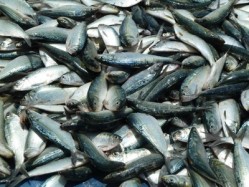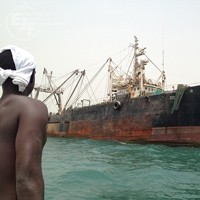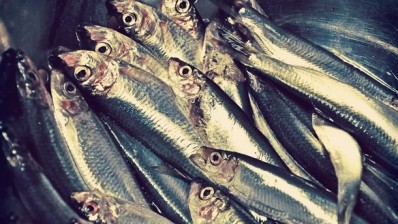Restaurants get mobilised for #WorldOceansDay

Through the Save the Seas Restaurant Campaign launched on 1 June by the Environmental Justice Foundation (EJF), 53 restaurants added an opt-out £1 donation to every bill or offering a sustainable seafood dish with a £1 donation included in the menu price, with 100 per cent of funds supporting EJF’s efforts to combat illegal fishing in West Africa.
EJF executive director Steve Trent told BigHospitality: “We’ve got the backing of some leading restaurants in the UK and increasingly throughout the world, and what they’re helping us do is draw public and political attention to the fact that our seas and oceans are the most remarkable resource on our planet, and yet they are in real trouble, and we need really dynamic efforts to help conserve the resource that provides invaluable food income and employment security to hundreds of millions of people around the world.
“If you lose the fish, a whole other chain of events can be set off, some of which is completely unpredictable. So this campaign is a very simple way for restaurants to talk in a very gentle way to their customers about World Oceans Day and try to make them understand the importance of our oceans.”
Michelin-starred chefs
Michelin-starred chefs including Martin Wishart, Shaun Rankin and Andy Waters are all part of the initiative, showing best practice in their own restaurants when sourcing seafood products.
Sam Harrison, owner of Sam’s Brasserie and Bar and Harrison’s Brasserie and Bar in London, explained how he ensures the fish he serves is caught in a sustainable way. “We only work with one fish supplier (South Bank Fisheries) who we know has one of the best reputations for the work that they do on sustainability, and they are heavily involved in different ways. We also make sure that we are knowledgeable and up to date at all times. Before we put any new species of fish on the menu, we would do our homework on it, talk to our fish supplier and check the traceability.”
According to Wishart, the first challenge in getting sustainably sourced fish is to get the right information, as sometimes certain species can be wrongly perceived as sustainable. “Speak to your fishmonger, as they know what species are currently endangered and what species are sustainable. Vary the fish that you buy as well, don’t just buy one species, and use farmed fish where it’s appropriate,” he said.
One of the major problems in ensuring the sustainability of a restaurant’s seafood is the lack of transparency in the worldwide fishery sector, meaning that sometimes fish suppliers themselves can’t guarantee the origin of their product. This in turns makes it difficult to estimate the percentage of UK restaurants that serve sustainable fish.
Transparency and customer demand
“One of the first things we need to do is change the architecture of global fisheries management and the governance of our seas and ocean to get a real guarantee of traceability for restaurateurs, retailers and diners. There is massive government interest and a lot of international negotiations going on at the moment. Without that, restaurants might think they’re buying sustainable fish when actually it has been fished off the coast of West Africa, stolen from local communities that have no other resources and shipped to the European market without anyone ever knowing,” added Trent.
Another issue restaurateurs can face is that fish sustainability is not generally a major concern for customers – without demand, there might not be enough of a commercial incentive to change their offer. But Harrison believes it is businesses’ responsibility to bring the issue forward, even if customers are not aware of it.
“Some customers ask, but a lot of people don’t. I don’t think people care as much as they should. Some restaurants could be a little bit braver. Sometimes you have to encourage your customers to try new things, and what’s lovely is when they’re surprised and you can get them to run with it. If you are doing it purely for profitability, then it’s not the right decision, but there should be a balance between profitability and sustainability,” he said.
Moreover, though sustainably sourced fish might seem more expensive at first, in the long term preserving the oceans’ biodiversity will bring prices down, whereas overfishing will result in ever-declining, and therefore expensive, supply.
How to ensure sustainability in your restaurant
Here is a step-by-step guide for restaurants thinking about making the switch:
1. Do your research
Information on the topic is abundant: EJF is currently working with the British Retail Consortium (BRC) and WWF to produce a guide to help people ensure they are getting rid of illegal fish in their supply chain. The Marine Conservation Society (MCS) and the Marine Stewardship Council (MSC) also have a wealth of resources on the topic.
2. Speak to your supplier
Once you know more on the issue, ask your supplier where the fish they source comes from, how it is fished, and whether they can guarantee its traceability. If they can’t give you a clear answer, consider switching to a supplier that can.
3. Get creative on your menu
With a lot of popular species declining in number, sourcing sustainable fish often means serving customers fish they may not have heard of, and you may not have worked with before. The MSC has a collection of sustainable recipes on its website to help you find creative ways to prepare such species as goan fish or halibut.
4. Tell your customers
Though some chefs believe sustainability should be a given in restaurants, and therefore shouldn’t need to be shouted about, education is a crucial element of solving the fisheries issue. Tell your customers where your fish is from, and encourage them to try new species.
Statistics
- About 90 per cent of our planet’s biomass live in the ocean, yet less than 1 per cent are protected.
- Around 3.5bn people depend on the ocean as their primary source of food.
- Over 70 per cent of the world’s fish resources are currently fished up to or beyond their sustainable limit.
- About 90 per cent of each of the world’s largest fish species (including cod and swordfish) have been lost since the 1950s.
- Globally, pirate fishing is estimated to be worth US$10-23bn annually, representing up to an estimated 30 per cent of the world’s total catch.
- The value of farmed food fish production was estimated at US$137.7bn in 2012.
Over the past two years, 43 restaurants have raised £20,000 for EJF’s Oceans Campaign, which aims to promote sustainable fisheries and eradicate pirate fishing and thereby protect vulnerable marine habitats and ensure the livelihoods and food security of vulnerable coastal communities. EJF’s work has resulted in prosecutions, fines and the eradication of illegal fishing vessels from areas reserved for artisanal fishers in Sierra Leone, an example the organization hopes to replicate in other countries.
“With the work we’ve done in Sierra Leone we are already seeing a recovery. Fish are coming back and are larger, which indicates the health of the fishery sector, and that only took a couple of years, so it’s not too late. We can protect what’s left and rebuild fisheries to have sustainable ones. All it takes is a bit more effort and collaboration,” concluded Trent.




































